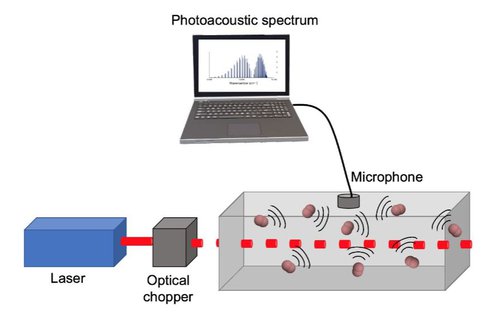Photoacoustic spectroscopy (PAS) is a highly sensitive absorption technique that can be used to
study solids, liquids, or gases. The principle behind PAS is the photoacoustic effect, which is the
generation of sound waves from light absorption in a sample. In PAS, a light source (most often
a laser) is directed into a sample. At specific wavelengths, molecules in the sample absorb
incoming light and heat up from the absorbed radiation. If the intensity of the light source is
modulated while the volume of the sample is held constant, the periodic heating of the molecules
causes a pressure wave that can be detected by a microphone.
One of the advantages of photoacoustic spectroscopy is that it measures absorption in a sample
directly. Unlike in transmission techniques, where the combined absorption and scattering of a
sample are measured, the signal in photoacoustic spectroscopy is only generated by absorption.
This is advantageous when measuring small background effects or when scattering in the sample
is significant, such as for aerosols. Other advantages of photoacoustic spectroscopy include its
large dynamic range.




